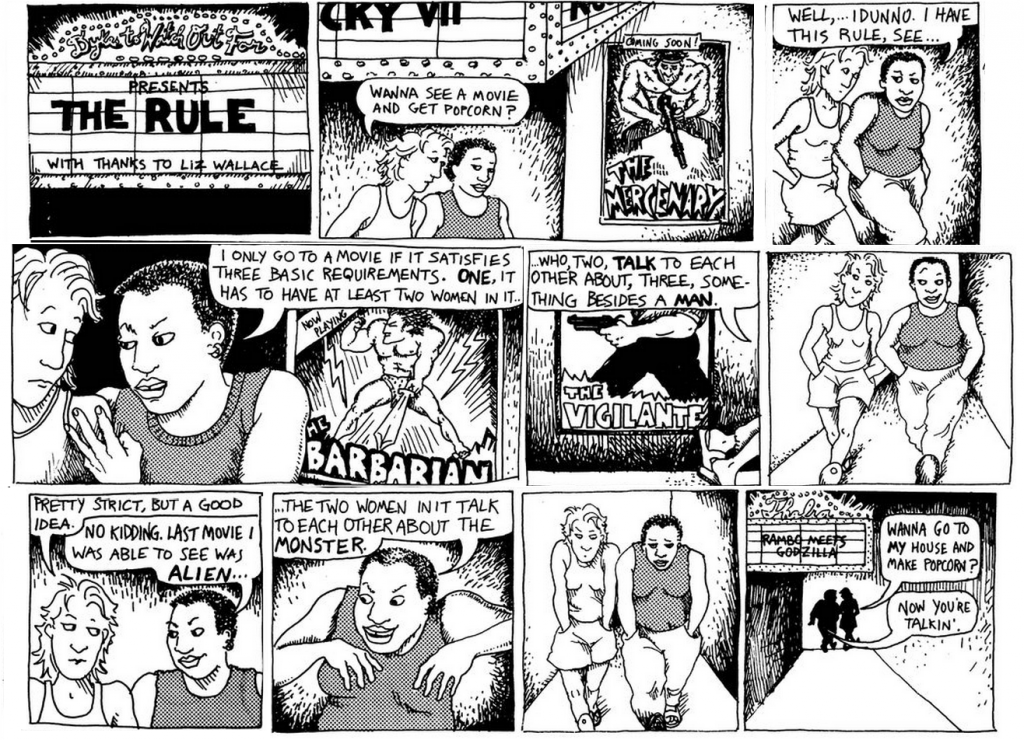The Bechdel test aims determine whether works of fiction are gender biased. To pass the test, the work must feature at least two named female characters, who talk to each other about something besides a male character.
The concept is simple and you’re probably thinking, ‘that’s silly, I’m sure that most films pass that test’, which is what I thought when I was first introduced to the concept. Then I tried to think of any film I’d seen which would pass the test. I couldn’t.
The test originated from Alison Bechdel’s comic strip Dykes to Watch Out For, in a strip from 1985 called The Rule, a female character states that she will only watch a film if it can satisfy the three requirements. It is sometimes referred to as the ‘Mo Movie Test’ after the female character but that isn’t correct as the character ‘Mo’ doesn’t appear in the strips until two years after The Rule was published. Bechdel has also said that she cannot take credit for the rules as she stole the idea from Liz Wallace whose name appears in the strip.
Half of the population consists of women who surely want to be represented on the big screen. And it would be offensive to assume that men wouldn’t want to watch women in film talking to each other, as if they speak some kind of elusive language that men don’t understand. So why is it that so few films manage to pass the simple test?
It’s hard to define why, Jennifer Kesler a film student raises some interesting points in her article on females in film. The frequent argument is that people don’t want to see them. Kesler mentions an industry pro once telling her “The audience doesn’t want to listen to a bunch of women talking about whatever it is women talk about.” But can that really be accurate?
As Cate Blanchett highlighted in her Oscar acceptance speech, “female films with women at the centre are [not] niche experiences” and “Audiences want to see them and, in fact, they earn money. The world is round, people.” In fact two of 2013s highest grossing films were The Huger Games Catching Fire (5th highest grossing film) and Frozen (2nd highest grossing). Both of which pass the Bechdel test and more importantly, feature strong female characters. It is undeniable that people will pay, literally millions to see films where women feature prominently.
The Bechdel test simply looks at the cast of films and whether it provides valuable female characters. It is possible for a film to fail but still present a strong female character, Mako Mori in Pacific Rim is a good example. It is also possible for the test to pass and provide no strong female characters. But it is an important starting point, it helps to illuminate the lack of female characters in film, and hopefully as the film industry advances and grows, it will not be necessary.
